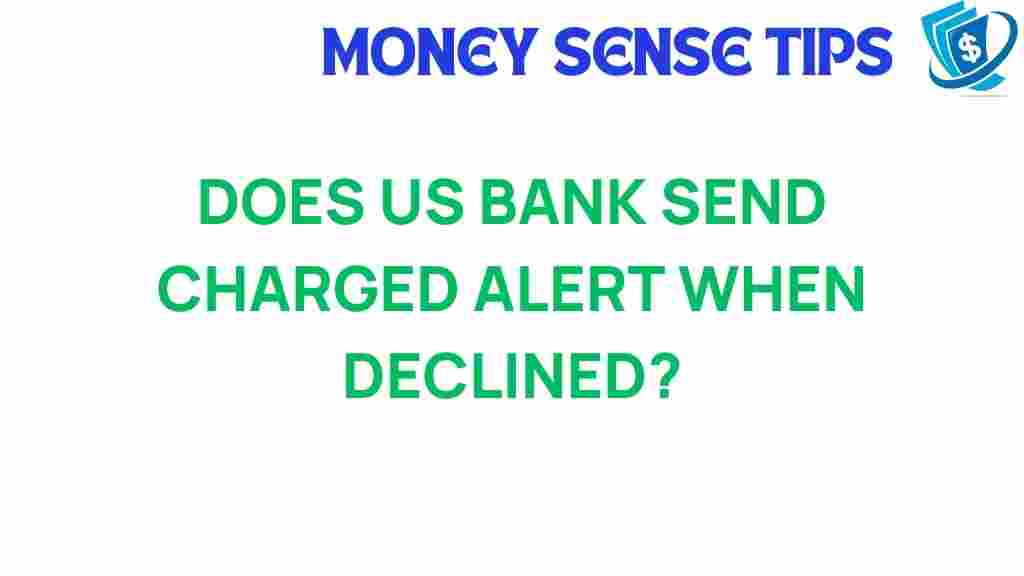What Happens When Your US Bank Transaction Gets Declined?
Experiencing a declined transaction can be frustrating, especially when you rely on your US Bank services for daily purchases and financial management. Understanding the reasons behind a transaction decline and knowing how to respond can significantly enhance your banking experience. In this article, we will delve into the various aspects of transaction declines, the alerts and notifications that accompany them, and tips on how to manage your finances effectively.
Understanding US Bank Transaction Declines
A transaction may be declined for several reasons, which can range from insufficient funds to security concerns. Here are some common causes of a transaction decline:
- Insufficient Funds: If your account balance is lower than the purchase amount, the transaction will be declined.
- Card Expiration: If your debit or credit card has expired, transactions will not go through.
- Suspicious Activity: US Bank monitors transactions for unusual activity. If a transaction appears suspicious, it may be declined as a security measure.
- Incorrect Information: Inputting incorrect billing information can also lead to declines.
- Payment Limits: Some accounts may have limits on the amount that can be spent in a single transaction or over a certain period.
Common Scenarios Leading to Transaction Declines
Understanding the context of your transaction is essential. Here are some scenarios where declines are common:
- International transactions without prior notification to US Bank.
- Recurrent failed attempts to make a purchase, which may trigger a security hold.
- Using a card at a merchant that is not recognized by US Bank as a legitimate business.
Receiving Charge Alerts and Banking Notifications
US Bank provides a robust notification system designed to keep you informed about your account activity, including transaction declines. Here’s how charge alerts and banking notifications work:
- Real-Time Alerts: You can opt-in for real-time notifications via SMS or email to receive immediate updates about your transactions.
- Transaction Decline Alerts: If a transaction is declined, you will receive an alert informing you of the decline status and reasons if available.
- Security Alerts: Notifications about suspicious activity help protect your account from fraud.
Setting Up Alerts for Better Financial Management
To enhance your banking experience, consider setting up the following alerts:
- Balance Alerts: Receive notifications when your account balance drops below a certain threshold.
- Transaction Alerts: Get notifications for every transaction made, which helps in tracking your spending.
- Payment Due Alerts: Stay informed about upcoming payment dates to avoid late fees.
To set up your alerts, log in to your US Bank online account and navigate to the notifications section. You can customize the types of alerts you wish to receive based on your preferences.
What to Do When Your Transaction Gets Declined
It’s important to remain calm and follow a step-by-step process when your US Bank transaction gets declined:
Step 1: Check Your Account Balance
The first thing you should do is check your account balance. If your balance is low, consider transferring funds or using an alternative payment method.
Step 2: Verify Your Card Information
Ensure that you are entering the correct card number, expiration date, and CVV code. Any discrepancies can lead to a transaction decline.
Step 3: Review Recent Transactions
Check your recent transactions through your US Bank app or online banking. If you notice any unauthorized charges, report them immediately.
Step 4: Contact US Bank Customer Service
If you’re uncertain about the reasons for the decline, contact US Bank customer service. They can provide specific details about your account and help resolve any issues.
Troubleshooting Transaction Declines
Sometimes, simple troubleshooting can resolve the issue at hand. Here are some helpful tips:
- Try a Different Merchant: If you encounter a decline at a specific merchant, try making a purchase elsewhere to rule out merchant-related issues.
- Use an Alternative Payment Method: If your transaction is urgent, consider using cash or a different card until the issue is resolved.
- Update Your Banking Information: If you’ve recently moved or changed your phone number, ensure that your banking information is up-to-date with US Bank.
Customer Experience and US Bank Services
Your experience with US Bank can greatly influence your financial management. Here are ways US Bank enhances customer experience:
- 24/7 Customer Support: US Bank offers round-the-clock support, ensuring you can get help whenever you need it.
- User-Friendly Mobile App: The US Bank mobile app allows you to manage your account, view alerts, and respond quickly to transaction issues.
- Educational Resources: US Bank provides financial education resources to help you manage your finances better.
For more insights on managing your finances effectively, consider visiting US Bank’s official website.
Conclusion
Experiencing a transaction decline with your US Bank account can be inconvenient, but understanding the causes and knowing how to react can turn a frustrating situation into a manageable one. By setting up alerts, monitoring your account, and utilizing customer service resources, you can enhance your banking experience and improve your financial management skills.
Next time you face a transaction decline, remember to stay calm, follow the troubleshooting steps outlined above, and take full advantage of the banking services US Bank offers to keep your finances on track.
This article is in the category Services and created by MoneySenseTips Team
